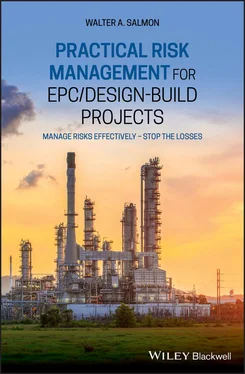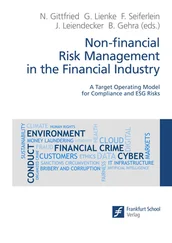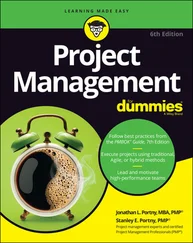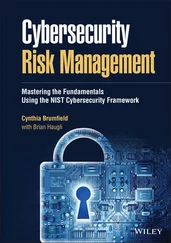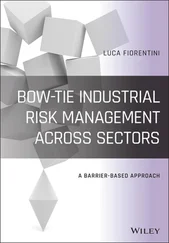An EPCM arrangement therefore deals only with the provision of certain construction management services involved in the implementation of a construction Project, not the undertaking of any aspect of the physical work activities. However, it is perfectly possible under this arrangement for the Management Consultant to be appointed to undertake additional functions, such as producing/developing the Conceptual Design and undertaking the Basic Engineering Design work (or the Front-End Engineering Design work, dependent on the industry involved) as well as the Detailed Design work. The Management Consultant may perhaps even undertake the Detailed Design work (in circumstances where an EPC contractor will not be appointed, which would otherwise complicate the allocation of the responsibility for design and functionality risks). Additionally, the Management Consultant will usually be required to organise and supervise all the procurement work (again, where an EPC contractor is not to be appointed). The Management Consultant would not normally carry out any construction work (since that would automatically create a conflict of interest) but, instead, would usually be required to monitor the construction activities and act as the Employer's eyes and ears, in order to ensure that the facility is completed in accordance with the Employer's requirements in all respects.
The Management Consultant's responsibility for meeting the completion time requirements for a Project will also vary under an EPCM contract according to (i) the level of authority granted to the Management Consultant and (ii) the extent of the involvement of the Employer's Team in directing and supervising the other Project participants. Such a contractual arrangement therefore may or may not hold the Management Consultant responsible for timely completion of the Project, and the Conditions of Contract must be especially written for such an EPCM arrangement, since there are currently no standard forms of contract to deal with this approach to Project implementation.
The complexity of the possible EPCM arrangements is explored and explained in the PricewaterhouseCoopers (PwC) paper titled ‘EPCM Contracts: Project delivery through engineering, procurement, and construction management contracts’. 7 A reading of other extant publications on the Internet will reveal widely different views as to the suitability of adopting the EPCM approach over the EPC approach. This means that it is therefore essential for the Employer to obtain competent advice about the most appropriate contractual route to take for a major Project, since the wrong choice could result in the Project being completed a lot later than the Employer requires, and at a far higher price than expected. In regard to that, Ron Douglas 8 provides a series of charts to compare EPC and EPCM contracting options for the key aspects of a Project, and he observes:
... the inefficiencies of layering and bureaucracy of decision making processes in EPCM result in inefficient organisation for an extended time and higher costs result. Also, the risk remains with the client and recent performance history indicates owners are being impacted by the advice of their representatives.
Following that note, and having explained how the term ‘EPCM’ can cause confusion, I will go no further with the topic of the EPCM approach, since the primary subject matter of this book is about EPC Projects which, as demonstrated, most certainly are not EPCM Projects.
2.6 Employers Prefer Lump-Sum Contracts
I have had many a conversation over the past 15 years or so with senior Consulting Engineers and members of Project Management Consultancies as to why it is that lump-sum EPC Contracts are now preferred more by Employers than they were in previous years. As a result of those discussions, I have formed the opinion that the following are probably the main reasons:
1 Employers seem to have been persuaded that an EPC Project will be delivered much quicker on account of the probable time saving in the design stage. Ordinarily, under the Traditional Contracting arrangement, the Contractor will not be able to commence the construction work until the design has been fully completed by the Employer's Design Team. This line of thinking is anchored in the belief that a Contractor will be able to start the construction work much earlier under an EPC arrangement, since any yet-to-be-completed design portions will be under the Contractor's complete control.
2 Employers believe that, under the lump-sum EPC arrangement, there is far more certainty for them about the final costs of the Project than with the Traditional Contracting approach. This belief seems to hinge on the fact that the Contractor would be responsible for calculating its own quantities for bid pricing purposes, and would therefore not be able to claim extras on the grounds that the Employer-supplied bills of quantities were inadequate and had led to unavoidable under-pricing by the Contractor at the bidding stage.
3 Employers also believe that, with the right level of quality control (usually with the help of Project Management Consultants) and the imposition of appropriate performance/reliability requirements, the final quality of the completed facility and its reliability under operation would be no less for an EPC Project than if the Traditional Contracting route were to be employed.
I conducted reasonably extensive investigations into the above points to see if the Employers' suppositions held water, but my attempts at proving the efficacy (or otherwise) of the EPC approach over the Traditional Contracting route only turned up the following.
1 Construction Projects worldwide notoriously do not finish on time. 9 However, I could not determine whether or not EPC Projects finish closer to their original completion time than Projects implemented using the Traditional Contracting route, simply because I could not unearth any comparative data on the topic.
2 Likewise, I was not able to find any evidence to show whether or not Projects conducted under an EPC arrangement are less affected by increased costs for the Employer than those conducted under the Traditional Contracting approach.
3 When it comes to data showing that, in terms of quality and reliability, the completed facility resulting from EPC Projects is as good as or worse than that seen in Projects completed via the Traditional Contracting route, nothing seems to be available there either.
Since I could find no data to counter the abovementioned supposed benefits of EPC Contracts from the Employer's perspective, I have no reason to consider that the Employer's viewpoint might be wrong. In addition to the foregoing, it also seems that Employers very much like the fact that the EPC Contractor offers them a single point of contact (‘one-stop shop’) for everything on the Project. That is not just for the guaranteeing of the efficacy of the design and construction work but also for allocating total responsibility in the event that something goes wrong at any stage, whether it is with design, procurement, construction, or post-completion operations. A further added benefit for Employers is that many of the risks that would ordinarily fall to the Employer to bear can legitimately be transferred to the Contractor under the EPC Contract (at a price, of course), simply because the Contractor is given the entire Project implementation responsibility. That could never be the situation under the Traditional Contracting route.
Having worked on both sides of the fence (for Employers, both under and not under the PMC umbrella, and with/for Contractors), I long ago concluded that, on balance, lump-sum EPC Contracts benefit the Employer more than the Contractor. This conclusion was not based solely on the fact that I did not see any single one of the Contractors I had been associated with make the level of profit that was anticipated at the time the EPC bid was submitted (some even made large losses). 10 More than anything, my mind was made up because I had many times observed that, provided that the Employer knew with certainty what was needed in the completed facility and avoided issuing too many sizeable Variations, the final cost for an EPC Project was far more likely to come within the Employer's original budget than if the Traditional Contracting route had been adopted. This greater certainty regarding costs for the Employer is mainly due to the fact that, under the Traditional Contracting approach, the Employer has little control over the Design Team but still has to bear all the extra costs of design changes and any extras introduced by the Design Team, plus bear the extension of time and all the associated costs any such matters cause.
Читать дальше
